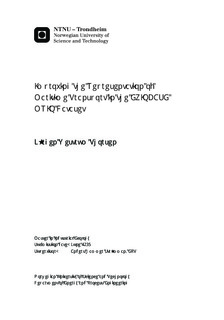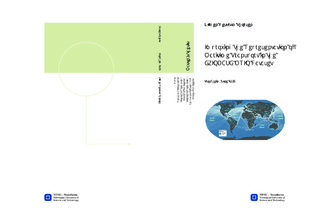| dc.contributor.advisor | Strømman, Anders Hammer | nb_NO |
| dc.contributor.author | Thorsen, Jørgen Westrum | nb_NO |
| dc.date.accessioned | 2014-12-19T11:51:16Z | |
| dc.date.available | 2014-12-19T11:51:16Z | |
| dc.date.created | 2013-10-08 | nb_NO |
| dc.date.issued | 2013 | nb_NO |
| dc.identifier | 654868 | nb_NO |
| dc.identifier | ntnudaim:10018 | nb_NO |
| dc.identifier.uri | http://hdl.handle.net/11250/235315 | |
| dc.description.abstract | This aim of this report is to improve the EXIOBASE dataset by integrating life cycle inventories of 11 individual ship classes. The report then calculated the Global Warming Potential (GWP) of seagoing transport was calculated using Environmentally Extended Multi-Regional Input-Output(EE MRIO) analysis. This work has made it possible to more accurately model the GWP of interregional seagoing transport, and to assess the impact contribution of each vessels, both for total interregional transport and as a product of the import demand of one or more regions.The report found that the total GWP from international maritime trade is 2.006 billion tons of CO2-equivalents, a figure that is approximately twice as large than the ones found in similar studies(IMO 2009, Lindstad, Asbjørnslett et al. 2012, UNCTAD 2012).The results of this report demonstrate that North America, OECD Europe and OECD Pacific have the highest GWP embodied in imports from seagoing trade. Crude oil carriers is the vessel class with the largest GWP, accounting for 40% of the total fleet GWP and with OECD Europe and North America as the greates crude oil importers. | nb_NO |
| dc.language | eng | nb_NO |
| dc.publisher | Institutt for energi- og prosessteknikk | nb_NO |
| dc.title | Improving the Representation of Maritime Transport in the EXIOBASE MRIO Dataset | nb_NO |
| dc.type | Master thesis | nb_NO |
| dc.source.pagenumber | 82 | nb_NO |
| dc.contributor.department | Norges teknisk-naturvitenskapelige universitet, Fakultet for ingeniørvitenskap og teknologi, Institutt for energi- og prosessteknikk | nb_NO |

